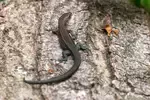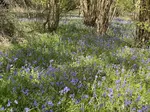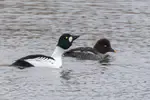- Home
- Nature Walks East of England
- Cambridgeshire walks
- Paxton Pits
Paxton Pits: The Day I Learned the Magic of Falling Behind
My first guided walk at Paxton Pits started with a familiar, quiet dread.
It was a cold December morning, the world felt grey, and I remember huddling in the visitor centre, feeling like a total imposter. I was surrounded by people who knew their birds, and my biggest fear was that I'd spend two hours just nodding along, understanding nothing.
I almost didn't bring my camera out of the bag. I thought, 'What's the point? Everything will be a distant speck, and my photos will just be blurry reminders of things I can't even name'.
I couldn't have been more wrong.
 Male Wigeon
Male WigeonWhy You Will Love This Place
If you've ever felt that same sense of being an "uninitiated outsider" in nature, Paxton Pits is the perfect place to start changing that.
It’s not a reserve full of rare, intimidating species. It’s a place that rewards simple, quiet observation.
It’s where you can have your first "aha!" moment, turning a confusing blur of birds into a handful of familiar faces.
This guide isn't a list of every bird I saw, or have seen since, at this nature reserve. It's the story of the three lessons that day taught me—lessons that began to turn my frustration into confidence.
The Gift of a Guide's Eyes
For the first hour, I struggled.
The mist hanging over the lake was thick, and the birds were distant shapes.
The guide, Martin, would point his telescope and name a bird, but to my eyes, it was just a smudge.
Then we came to the gulls. A cloud of them. I'll be honest, my brain used to file all gulls under "noisy chip-stealers."
Martin pointed to two birds side-by-side.
"See the difference?" he asked, sensing my confusion.
"Everyone gets stuck on gulls," he said. "Especially this time of year. The one on the right is a Black-headed Gull, but the trick is, it only has a full black head in summer, and even then its actually dark chocolate coloured!
In winter, you just look for that little black ear spot, the red bill, and the red legs."
He then pointed to the other, slightly smaller bird. "And that's a Common Gull. Notice its yellow-green legs and that thin bill with the dark band? We don't see them this far south in Cambridgeshire all that often, so it's a nice spot."
 Do you see the two gulls? Common Gull (left) and Black Headed Gull in winter plumage (right)
Do you see the two gulls? Common Gull (left) and Black Headed Gull in winter plumage (right)Suddenly, it wasn't a confusing mass of birds anymore. Knowing what to look for felt like I’d been let in on a secret, but a flicker of doubt followed—would I remember all this if I saw them again?
Determined to hang on to the feeling, I quickly jotted the details down in a small notebook.
What was once just a 'gull' was now a Common Gull or a Black-headed Gull; the world had gone from being an indecipherable blur to a page I was just beginning to learn how to read, and I didn’t want to lose my place.
I remember thinking to myself, "Stop trying to see everything. Just try to see one thing clearly".
That's the first step. It’s how you build confidence, one bird at a time.
The Magic that Happens When You Fall Behind
As the walk neared its end, I found myself trailing at the back of the group, lost in my own thoughts. The others stopped briefly at a viewpoint, and I heard a quick mention of "Goosander" before they moved on.
That name, which was new to me an hour ago, now meant something.
When I reached the fence, I paused. My eyes scanned the water, and there it was.
I saw another bird with a black head and a sharp, red bill. The black splash on its back, standing out sharply against the snowy white body feathers, looked like someone had spilled a bottle of ink.
It was that same distinct, elegant duck from earlier—the male Goosander and this time there was another bird with him, presumably his mate.
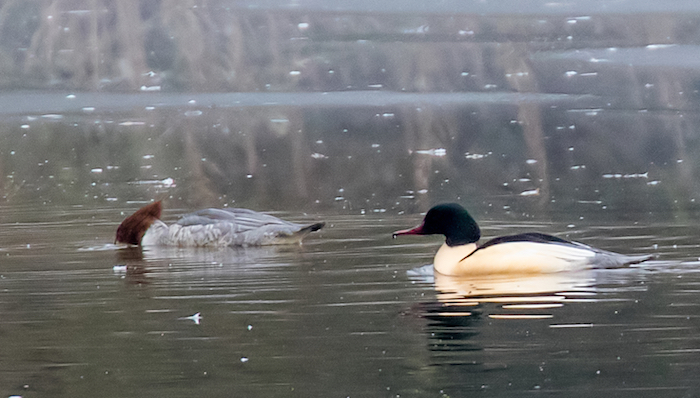
I could see they were about to take flight, so I lifted the camera. I knew, from past failures, that I needed a fast shutter speed to have any chance of freezing the action.
A little voice in my head started chanting, '1/1600s, at least. Just get the speed right'
He took off, and my photo was… okay. It felt like a small, private victory. A perfect photo? No, but it was sharp enough, and it was a moment that was entirely my own.
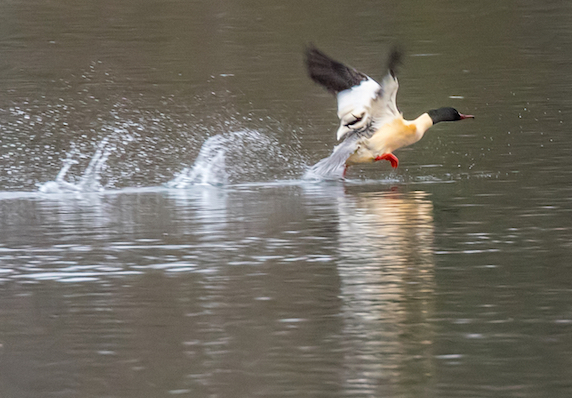
A Flash of Blue, A Lesson in Stillness
As I turned to catch up with the others, I saw it. A searing flash of electric blue.
A kingfisher.
My heart hammered in my chest. This is the moment every aspiring wildlife photographer dreams of and dreads in equal measure. My first instinct was to rush, to panic.
But the lesson from the Goosander echoed in my mind: slow down.
I sank onto a wet bench, the cold seeping through my jeans, and told myself, "Don't just be a photographer. Be a statue. Your only job is to be still."
The bird darted about, a blur of turquoise and orange, before finally settling on a branch nearby.
Finally I thought I might get a photo.
I had to use my thumbnail to feel the edges of the dial, as my fingers were, by now, numb from the cold.
I moved the focus square onto the birds head and silently begged it to stay put.
I grabbed a few shots before taking a sneak peak at the screen on the back. I had been told many times not to "chimp" but I just couldn't resist. I needed to know if I had captured my prize. And I had!
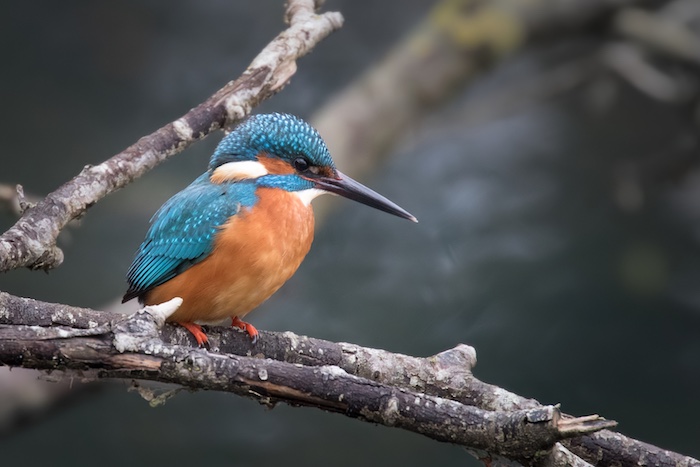
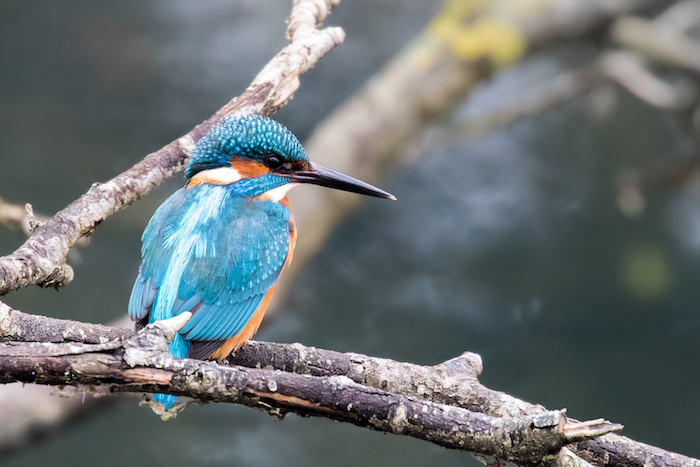
Now I could relax a little knowing I had something good on the card.
For the next hour, I just sat there. And the reward wasn't just the photos. It was the profound joy of being granted access to a wild creature's world, simply because I was willing to be patient.
Practical Field Notes for Your Trip
- My Recommended Gear: Honestly, don't worry about a huge lens. A good pair of binoculars will give you just as much joy here, especially for learning the gulls. I used my 100-400mm lens, and it was perfect for the kingfisher.
- The One Setting I Relied On: If you have a camera with modes, try Shutter Priority (S or Tv). I kept my shutter speed at a minimum of 1/1250s. This meant I was always ready for a bird taking flight, which is the secret to avoiding a "blurry, disappointing mess".
- Finding Your Way: The reserve is well-signposted from the car park. The key spots are the Hayden Hide and the viewpoints around Heronry South lake.
- Enjoy Your Own Company: The guided walks are fantastic for learning, but the real magic happens when you are on your own. It feels as though you have the whole world to yourself, apart from the wildlife of course.
The "One Thing to Look For" Challenge
Your challenge for this walk is not to find a kingfisher. It's to find a Grey Heron.
Don't scan the water for frantic movement; instead, scan the reedy edges for absolute stillness.
Look for a tall, grey shape standing perfectly motionless at the water's edge, like a garden statue come to life.
Because they are so large and patient, they are a wonderful gift for any photographer tired of taking blurry photos of fast-moving birds.
Your real challenge isn't just to spot one.
It's to try and out-patience it. Sit quietly for five minutes and just watch.
See how a creature can use complete stillness as a tool. It’s a small act, but it will give you a tangible success and teach you more about the patience needed for wildlife photography than a dozen fleeting glimpses ever could.
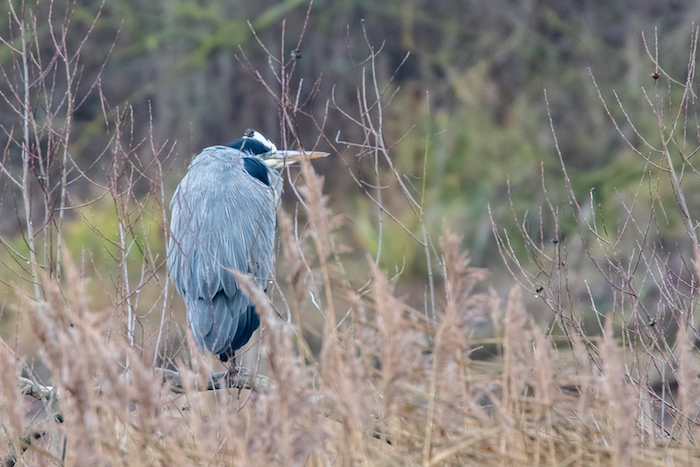
Closing Reflection: The Shared Feeling
Leaving the reserve that day, I realised the photos on my memory card were just a bonus.
The real prize was the feeling of a world coming into focus. It was the difference between looking at a landscape and truly seeing the life within it.
It’s the shift from the frustration of ignorance to the quiet pride of knowing.
It’s a feeling we are all searching for in nature, and it’s waiting for you at Paxton Pits if you’re willing to fall behind, be still, and just watch.

About the Author
I’m a wildlife photographer who learns on everyday walks. This site is my field notebook: practical photo tips, gentle ID help, and walk ideas to help you see more—wherever you are.
Step Behind the Wild Lens
Seasonal field notes from my wildlife walks: recent encounters, the story behind favourite photos, and simple, practical tips you can use on your next outing.


